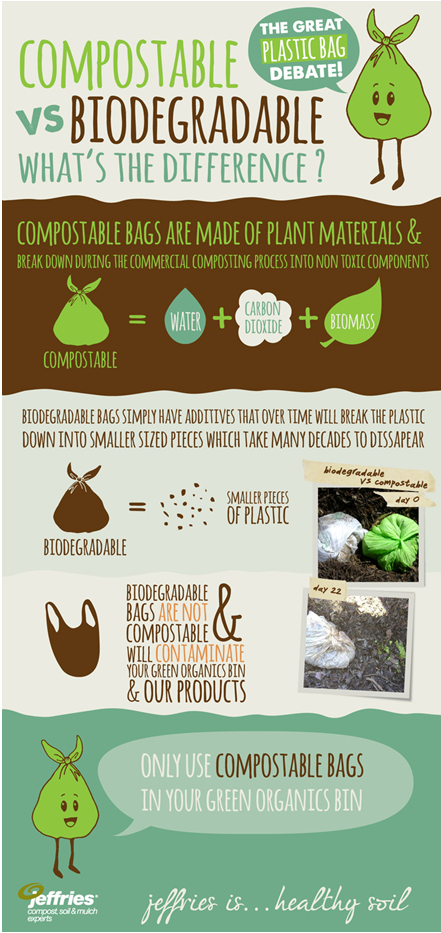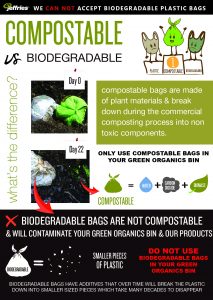Plastic bags are one of the main contaminants found in the green bin. There is a lot of confusion caused by the term biodegradable which alludes people to think that it will break down and therefore place them in the green bin or recycling bin.
The only bags that can go in the green bin are certified compostable bags.
So what’s the difference between degradable, biodegradable and compostable bags, and which bin should you place them in?
DEGRADABLE
Degradable bags are made from plastic with other chemicals added (including heavy metals) that cause the plastic to break down and disintegrate over time when exposed to sunlight and heat. If degradable bags are released into our environment they become quite problematic as they break down into hundreds of tiny pieces of plastic. Animals can consume the smaller pieces of plastic more readily than they would if the bags were still whole. It is also much more difficult to remove hundreds of tiny pieces of plastic from the environment than it is to remove a single bag.
Which Bin? Degradable bags should only be used or placed into your general waste bin
BIODEGRADABLE
Like degradable bags, biodegradable are often still plastic bags that have microorganisms added to break down the plastic.
Which bin? Biodegradable bags should only be used or placed into your general waste bin
COMPOSTABLE
Compostable bags are made of natural plant starch, and do not produce any toxic material. Compostable bags break down readily in a composting system through microbial activity to form compost. In order to be classified as compostable they must meet the Australian Standard for compostability (AS-4736) and will have this symbol:

Which bin? Compostable bags can be used to line your kitchen caddy for collection of food scraps and then placed into Green Organics bin.
For further clarification check out the Jeffries information below available from
http://www.jeffries.com.au/compostable-vs-biodegradable.html


